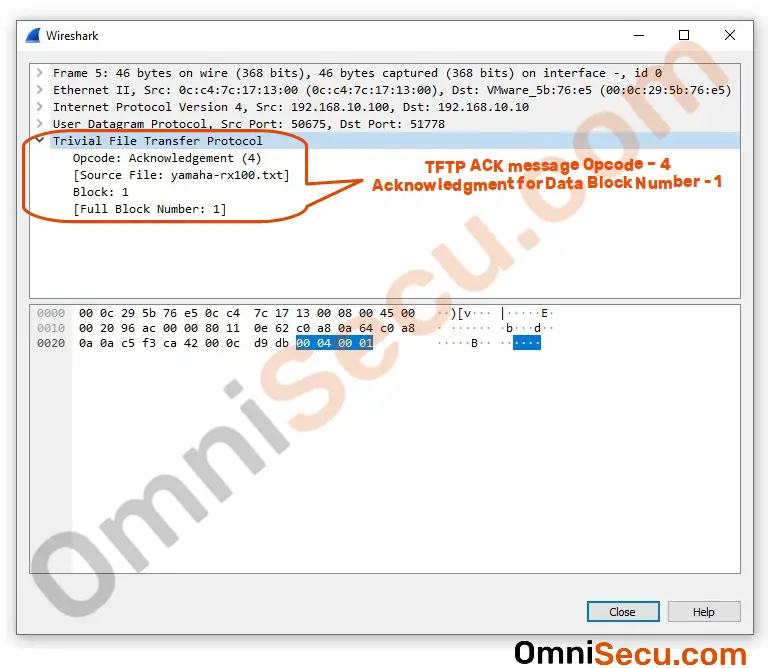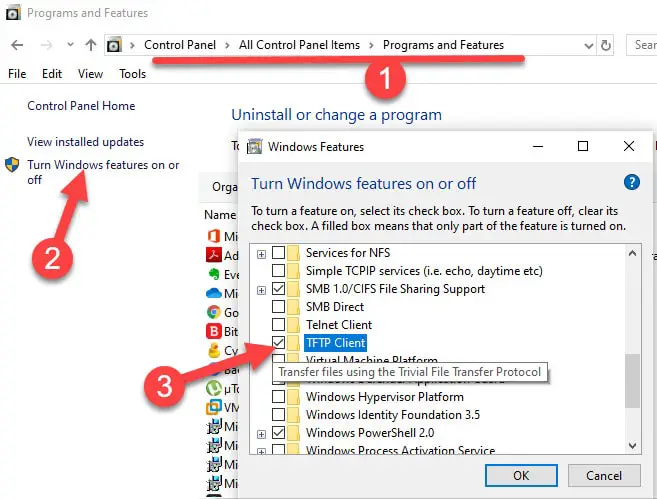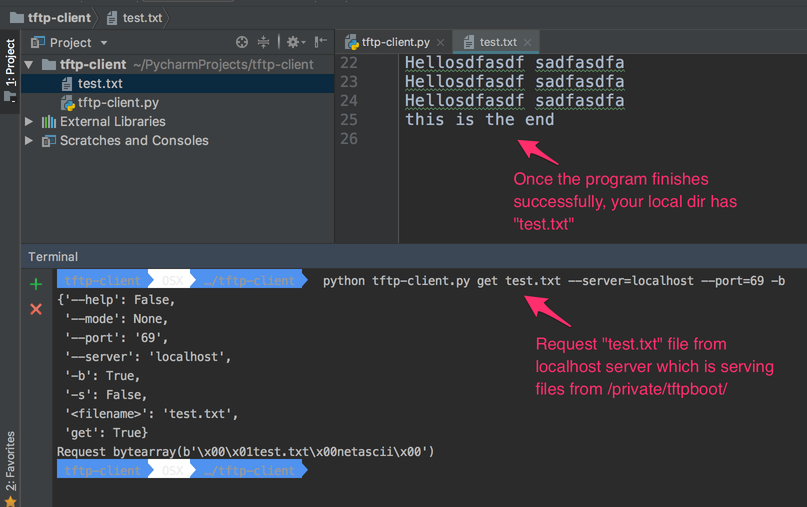

Print help informationĬonnect host Set the host (and optionally port) for transfers. Once tftp is running, it issues the prompt tftp> and recognizes the following commands: Print the version number and configuration to standard output, then exit gracefully. R port:port Force the originating port number to be in the specified range of port numbers. m mode Set the default transfer mode to mode. Used to avoid special processing of ':' in a file name. Must be specified last on the command line.ĭefault to literal mode. c command Execute command as if it had been entered on the tftp prompt. Host for future transfers (see the connect command below.)Ĭonnect with IPv4 only, even if IPv6 support was compiled in. The remote host may be specified on the command line, in which case tftp uses host as the default The Visual Studio Conversion Wizard will guide you through the process of converting the project to the version used.Tftp is a client for the Trivial file Transfer Protocol, which can be used to transfer files to and from remote machines, including some very Users with a later version of Microsoft Visual Studio can open such a project. The projects are created with Microsoft Visual Studio 2008. NET samples, including samples for Microsoft Visual C#. The Network Component project ships with a set of Microsoft Visual Studio. NOTE: Demo Projects are created with Microsoft Visual Studio 2008 There are many other working Network Component scripts on our site and shipped with the product.
#TFTP CLIENT EXAMPLE DOWNLOAD#
You can download the complete sample on our FTP site /samples/network-component/. If strReturn = "" AndAlso strDefaultValue "" Then Loop While strReturn = "" AndAlso Not bAllowEmpty ObjTftp.LogFile = Path.GetTempPath() & "Tftp.log"Ĭonsole.WriteLine("Log file used: ", strTitle, strDefaultValue)) ' Set Logfile (optional, for debugging purposes) In your Main function, declare and create the following object:Ĭonsole.WriteLine(("ActiveXperts Network Component " + objTftp.Build & ", Module ") + objTftp.)Ĭonsole.WriteLine("Expiration Date: " + objTftp.LicenseStatus & vbLf) On top of your code, type the following line to use the Network Component namespace: Select a name for the application (for instance: 'DemoApp') and a name for the solution (for instance: 'DemoSolution').Īlso, select the directory where you want to store the project (for instance: 'C:\MyProjects):Ĭlick 'OK' to close the 'Add Reference' dialog. In the 'New Project' dialog, select a Visual Studio template (for instance: 'Console Application'). Launch Microsoft Visual Studio (for instance 'Microsoft Visual Studio 2008') from the Start menu.Ĭhoose 'New' from the 'File' menu and click on 'Project'. The installation guides you through the installation process.
#TFTP CLIENT EXAMPLE INSTALL#
Step 1: Download and install the Network Componentĭownload Network Component from the ActiveXperts Download Site and start the installation. PutFile - put (upload) a file, either using binary transfer or ASCII transfer.GetFile - get (download) a file, either using binary transfer or ASCII transfer.DeleteFile - delete a file in the current directory.RenameFile - rename a file in the current directory.


The most important functions of the FtpServer object are: This document describes how the Network Component FtpServer object can be integrated into your projects. Network Component can be well integrated into any development platform that supports ActiveX objects. Network Component features the following: DNS, FTP, HTTP, HTTPs, ICMP Ping, IP-to-Country, MSN, NTP, RSH, SCP, SFTP, SNMP v1/v2c (Get, GetNext, Set), SNMP Traps, SNMP MIB, SSH, TCP, Telnet, TFTP, UDP, Telnet, Wake-On-LAN and more. By using Network Component, you can very easily create or enhance applications with network features. Network Component provides an easy-to-use development interface to a variety of IP protocols.


 0 kommentar(er)
0 kommentar(er)
